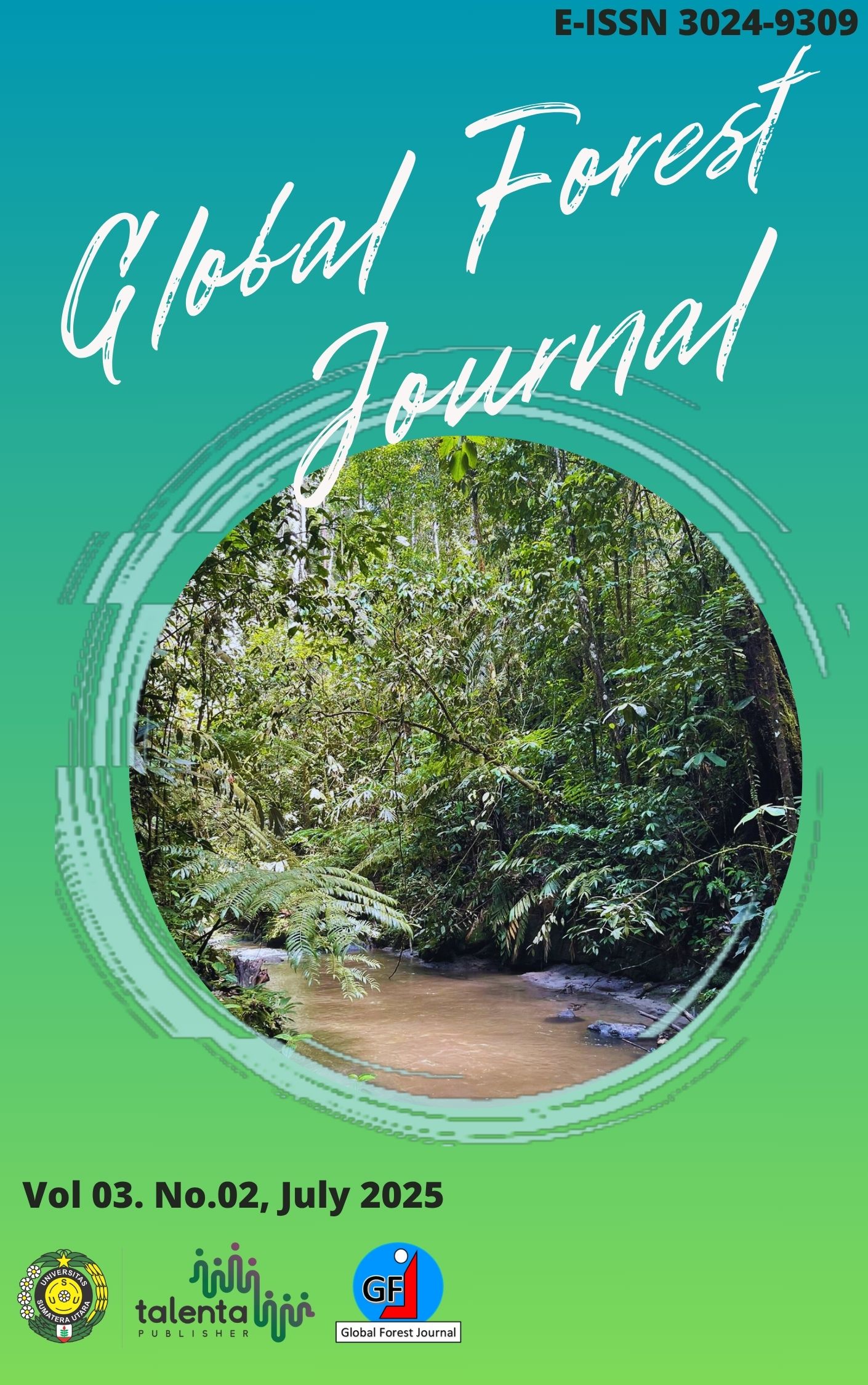Identification of honey bee plant sources to support the planning of apiculture locations in Sibolangit Natural Tourism Park
DOI:
https://doi.org/10.32734/gfj.v3i02.15572Keywords:
Apiculture, Honey Bee Feed, Sibolangit Natural Tourism ParkAbstract
Sibolangit Natural Tourism Park (SNTP) is a forest with an essential ecological
function and is considered a conservation area. SNTP is currently trying to
increase the benefits of the forest through non-timber forest products, namely,
honey bee cultivation. This study aimed to identify the type of plant source of bee
feed plants in SNTP. The methods utilized are literature studies and observational
studies using two radius points, namely radius one and radius two, at a 500-meter
separation. Based on the results of a literature study, it was found that 56 species
of bee food sources in SNTP, including 36 plant species, of which the flowering
period has been identified, namely 19 species of flowering plants throughout the
year and 17 flowering seasonally. Based on the point one observation radius
results, 25 species of bee feed plants were obtained, with the dominant plant being
Coffea arabica. A radius of two through 10 types of bee feed plants was obtained
at the observation point. The dominating plants are Arenga pinnata, Arenga
obtusifolia, and Coffea arabica. Observation of radius one shows a more diverse
variety of plants than radius two. The diversity of bee food plants in SNTP
supports the honey bee cultivation
Downloads
Downloads
Published
Issue
Section
License
Copyright (c) 2025 Global Forest Journal

This work is licensed under a Creative Commons Attribution-ShareAlike 4.0 International License.












